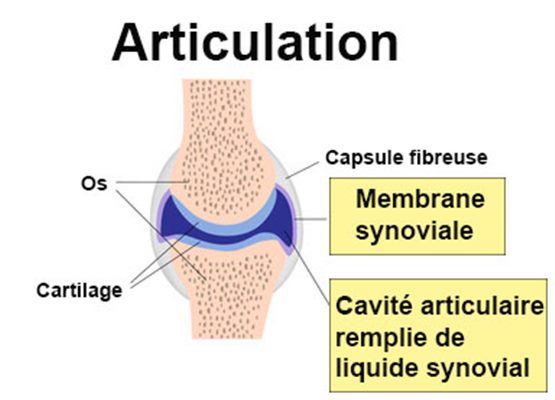Contents
Hydarthrose
Hydarthrosis is a pathological accumulation of fluid in the cavity of movable joints. Hydarthrosis of the knee is one of the best known. It manifests as swelling and pain in the knee.
Hydarthrosis, what is it?
Definition of hydarthrosis
Hydarthrosis is joint effusion, that is to say a pathological accumulation of synovial fluid in the joint cavity. This viscous joint fluid is secreted by the synovial membrane that lines the inside of movable joints. It lubricates joint surfaces, reduces friction between bones, absorbs shocks and nourishes cartilage.
Hydarthrosis can affect all movable joints. It is more often seen in the superficial joints, especially in the knee, elbow, fingers, wrists and feet.
Causes of hydarthrosis
Hydarthrosis has a mechanical origin. Its causes can be:
- an outbreak of osteoarthritis, especially in the knee (gonarthrosis);
- a fibrocartilaginous pathology such as a degenerative meniscal lesion (meniscosis);
- osteochondritis, or osteochondrosis, which is an abnormality in the growth of bone and cartilage;
- traumatic injury;
- rare arthropathy such as chondromatosis or nervous arthropathy.
Diagnosis of hydarthrosis
The diagnosis of hydarthrosis begins with a clinical examination. This allows you to inspect the painful joint and see if certain signs of a synovial effusion are present.
Other additional examinations may be performed. These include:
- a puncture at the level of the joint followed by biological examinations in order to analyze the joint fluid;
- medical imaging tests such as an x-ray or MRI (magnetic resonance imaging).
Patients with one of the pathologies listed above are more likely to develop hydarthrosis.
Symptoms of hydarthrosis
Appearance of effusion
The appearance of mechanical joint effusion differs from that of inflammatory origin. It has a light yellow color, translucent and viscous in appearance and with a composition poor in cells.
The effusion also results in the appearance of a swelling in the affected joint. This global swelling tends to make the anatomical reliefs of the joint disappear.
Pain
A hydarthrosis causes pain of a mechanical type. It worsens with activity and during the decline of this activity. Conversely, it improves at rest and shows neither lasting morning stiffness, nor nocturnal awakenings, with a few exceptions.
Treatments for hydarthrosis
The treatment of hydarthrosis begins with the removal of the accumulated joint fluid. This evacuation is carried out through an articular puncture. It relieves pain by reducing intra-articular pressure, if it is existing.
At the same time, the management of hydarthrosis will also be based on the treatment of the underlying cause. It could be for example:
- drug treatment based on analgesics;
- corticosteroid infiltration;
- wearing a device to support joint function;
- a surgical intervention with the installation of a prosthesis;
- etc.
Prevent hydarthrosis
In order to prevent the appearance of hydarthrosis and associated pathologies, it is recommended:
- to have a healthy and balanced diet;
- to practice physical activity on a regular basis;
- improve ergonomics at the workstation in order to limit the pressure exerted on the joints.










